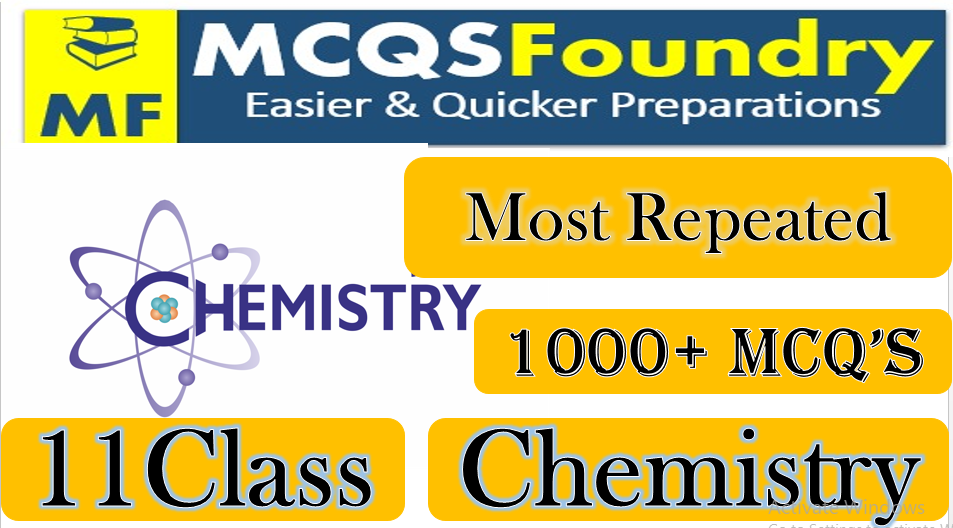We are providing accurate Some Basic Concepts of Chemistry Class 11 Mcq with Answers. Firstly You can read First year some basic concepts of chemistry class 11 mcq with answers pdf.

| Chemistry Mcq Questions For Class 11 Pdf Download Chapter 1 | Chemistry Mcq Questions For Class 11 Pdf Download Chapter 2 |
| Chemistry Mcq Questions For Class 11 Pdf Download Chapter 3 | Chemistry Mcq Questions For Class 11 Pdf Download Chapter 4 |
| Chemistry Mcq Questions For Class 11 Pdf Download Chapter 5 | Chemistry Mcq Questions For Class 11 Pdf Download Chapter 6 |
| Chemistry Mcq Questions For Class 11 Pdf Download Chapter 7 | Chemistry Mcq Questions For Class 11 Pdf Download Chapter 8 |
| Chemistry Mcq Questions For Class 11 Pdf Download Chapter 9 | Chemistry Mcq Questions For Class 11 Pdf Download Chapter 10 |
| Chemistry Mcq Questions For Class 11 Pdf Download Chapter 11 | Chemistry Mcq Questions For Class 11 Pdf Download Chapter 12 |
| Chemistry Mcq Questions For Class 11 Pdf Download Chapter 13 | Chemistry Mcq Questions For Class 11 Pdf Download Chapter 4 |
Chapter 7
Thermochemistry
1. Spontaneous reactions are:
- Reversible
- Irreversible
- Non irreversible
- None of these
2. The standard heat changes occur at:
- 25°C and 2 atm
- 298 K and 1 atm
- 25°C and 1 mm hg All Past P
- 273 K and 1 atm
3. H+ + OH → H2O the change in enthalpy for reaction is called:
- Heat of reaction
- heat of formation
- Heat of neutralization
- Heat of combustion
4. The net change in energy in a chemical reaction is same whether it takes place directly or indirectly. It is called:
- Henry’s law
- Charlie’s law
- Hess’s law
- Graham’s law
5. The enthalpy change when one mole of substance is completely burnt in excess of oxygen is called which one of following:
- Enthalpy of atomization
- Enthalpy of neutralization
- Enthalpy of Combustion
- Enthalpy of formation
6. Enthalpy change for the reaction: CH4(g) + 2O2(g) CO2(g) + 2H2O5 is called enthalpy of:
- Formation
- Combustion
- Neutralization
- Atomization
7. Standard enthalpies are measured at:
- 273 K
- 298K
- 373 K
- All of these
8. The exothermic process is:
- Evaporation
- Sublimation
- Respiration
- Boiling
9. A state function which describes together the internal energy and the product of pressure and volume is called:
- Enthalpy
- Internal energy
- Work
- Free energy
10. The total heat content of system is called:
- Entropy
- Enthalpy
- Temperature
- Internal energy
11. Whenever a reaction is exothermic, then it means that:
- The heat is transferred from surroundings to the system
- The heat content of the reactant is greater than product
- The heat content of the reactants is less than those of products
- The heat is transferred from system to the surroundings.
12. At constant volume qv is equal to:
- H
- E
- P
- V
13. The value of AH being very small, the term A (PV) can be neglected, for the process involving:
- Liquid and gas
- Liquid and solids
- Solids and gases
- None of these
14. In a Bomb calorimeter, the reaction are carried out at constant:
- Pressure
- Work
- Volume
- None of these
15. Whenever a reaction is endothermic, than it means that:
- Heat is transferred from surrounding to the system
- Heat is transferred from system to the surrounding
- Heat content of the products is greater than those of the reactant
- Heat content of the reactants is greater than those of the products
16. The number of fundamental ways for transferring energy into or out of system is:
- One
- Two
- Three
- Four
17. Work is product of force and:
- Volume
- Time
- Displacement
- Pressure
18. The enthalpies of all elements in their standard states are which among of the following:
- Unity
- Zero
- Always positive
- Always Negative
19. Which one of the following is not a state function?
- Pressure
- Volume
- Temperature
- Heat
20. Born-Haber’s cycle is used to determine the which one among the following:
- Combustion energy
- Decomposition energy
- Lattice energy
- Formation energy